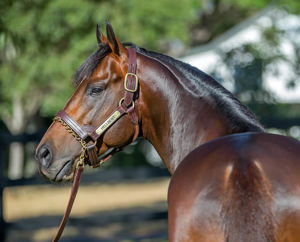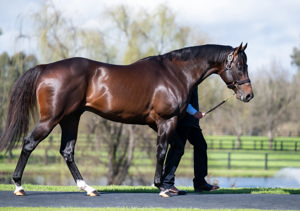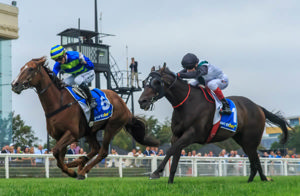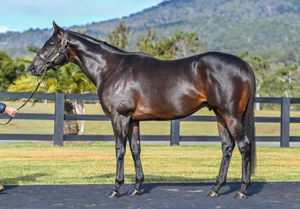As many of you would have noticed, I’ve written and commented extensively in the past few years on Darley’s ongoing fight with Revenue NSW to secure Land Tax Exemption for its breeding properties in NSW.
The industry needs to know about any cases impacting primary production land tax exemption, given the generally prohibitive cost of this land tax and that breeding and racing properties are often eligible to claim this exemption.

Another case on land tax exemption took my attention recently and it is well worth sharing the facts and outcome with you, especially as it was concerning a party seeking exemption as a “Primary Producer”. Unlike Darley, this was a taxpayer seeking exemption in Victoria, not NSW.
In short, a taxpayer in Victoria has failed to convince the Supreme Court that land slated for future development was primary production land despite a significant amount of cassinia growing on the land. For the curious, cassinia is a plant that can be used in the restoration of gravel pits, mine dumps and highly disrupted soils. The taxpayer was held liable to land tax, given also the clear intention to develop the land.
1.0 Facts
The taxpayer owned land at Diggers Rest in greater Melbourne. In 2012, a local precinct plan was approved that allowed for the development of the land for residential and other use. The taxpayer soon after applied for planning permits and in 2022 a plan of subdivision was registered.
The Commissioner of State Revenue issued land tax assessments for the 2014, 2015 and 2016 years for the land. The taxpayer argued the land was exempt as land used solely or primarily for the business of primary production under the VIC Land Tax. To access exemption, the “dominant purpose” of the property must be for “primary production”. That section exempted such land in an urban zone in greater Melbourne where an owner was able to demonstrate a connection to an entity carrying on a business of primary production on the land. Broadly the issue before the Supreme Court was whether the relevant exempting provisions applied in the taxpayer's circumstances.
The taxpayer's position was that in each of the relevant years the land was used partly for agistment of cattle and partly for residential development, but mainly for a business of the cultivation of cassinia. The taxpayer argued that the subdivision occupied only a relatively small part (4.7%) of the land and the bulk of the land was unsuitable for residential development. The taxpayer claimed that at all relevant times it was either producing cassinia on the property or was preparing for cassinia production.
The Commissioner emphasised the lack of contemporaneous business plans from the relevant years or earlier that showed a purpose of cultivation of cassinia for sale and argued that the activities of the taxpayer were consistent with soil remediation in accordance with a plan to further develop the land for residential use. Again, the absence of Business Plan was significant to the failure of this case.
The circumstances around the production of the “Business Plan” did not help the credibility of the taxpayer’s arguments.
A document entitled “Business Plan DRAFT Diggers Rest Nursery (Reconstructed following fire on 6 May 2007)” was also exhibited by Mr Apswoude (sole shareholder for the company taxpayer). The Commissioner observes that, like the Business Plan 2008/2009, this document was not a “reconstruction” since there had never been a business plan for the Diggers Rest nursery. The Court should find that this document was created in order to give the misleading impression to the Commissioner that in 2007 there was a business plan for the nursery for cultivating cassinia. Again, the Commissioner says that this document also reflects poorly on the credibility of Mr Apswoude.
The Commissioner submitted that once it became clear that these documents were created no earlier than 2016, Mr Apswoude’s assertion that they were the product of an insurance response to the 2007 fire was obviously untenable — yet he did repeatedly decline to resile from that proposition. Notably, no evidence, such as insurance records, was offered to support this assertion, and the consultants who assisted in the preparation of the “reconstructed” documents were, inexplicably as the Commissioner contends, not called to corroborate Mr Apswoude’s highly unlikely account. Additionally, in cross-examination, Mr Apswoude was taken to a document entitled “Reconstructed Business Plan from 2004”. Again, the Commissioner contends that this document is misleading because there was in fact no business plan in 2004.
2.0 Decision
The Supreme Court rejected the taxpayer's position, finding on the evidence that cultivation of cassinia could only ever have been secondary to the main business of property development.
Although there was a significant amount of cassinia growing on the land, there was little evidence of cultivation to the requisite degree, extent and intensity and there were no sales of cassinia in the relevant years. To establish that the land was primarily used for primary production the cultivation of cassinia must be sufficient to characterise the whole of the land notwithstanding any other uses. The actions of the taxpayer also showed an intent to develop the land, e.g., the applications for planning permits, to exploit capital appreciation brought about by zoning changes in 2012. When a significant aspect of the activities done on and in respect of the land was directed to future development, it was difficult to conclude that the land was used primarily for the business of primary production rather than as development land.
Sales are a crucial element to proving a “business” of primary production. Moreover, the Commissioner submitted that it is notable that an expert Report has been retained by the Appellant, there is not a single contemporaneous document — created prior to 31 December 2015, the latest date directly relevant to this proceeding — supporting the Appellant’s claimed commercial purpose for growing the cassinia during the tax years now under consideration. In the years in question, the activities undertaken by Mr Apswoude and Mr Tran (a family member) are, the Commissioner contends, consistent with growing cassinia in order to remediate the soil and to keep weeds at bay, as had been advised by the experts. In the words of the court, “These activities, it is said, are not consistent with a commercial cassinia business having commenced. There were no written business plans from this time that evidenced cassinia cultivation being a commercial enterprise for the Appellant. Additionally other parties had not yet been engaged to measure fences, nor been engaged to assist on the farm. There had been no sales of cassinia and the business name “Native Brush Fencing” had not yet been registered.”
Please do not hesitate to contact the writer if you wish for me to clarify or expand on any of the matters raised in this article.
PAUL CARRAZZO CA
CARRAZZO CONSULTING PTY LTD
801 Glenferrie Road, Hawthorn, VIC, 3122
TEL: (03) 9982 1000
FAX: (03) 9329 8355
MOB: 0417 549 347
E-mail: paul.carrazzo@carrazzo.com.au
Web: www.carrazzo.com.au










